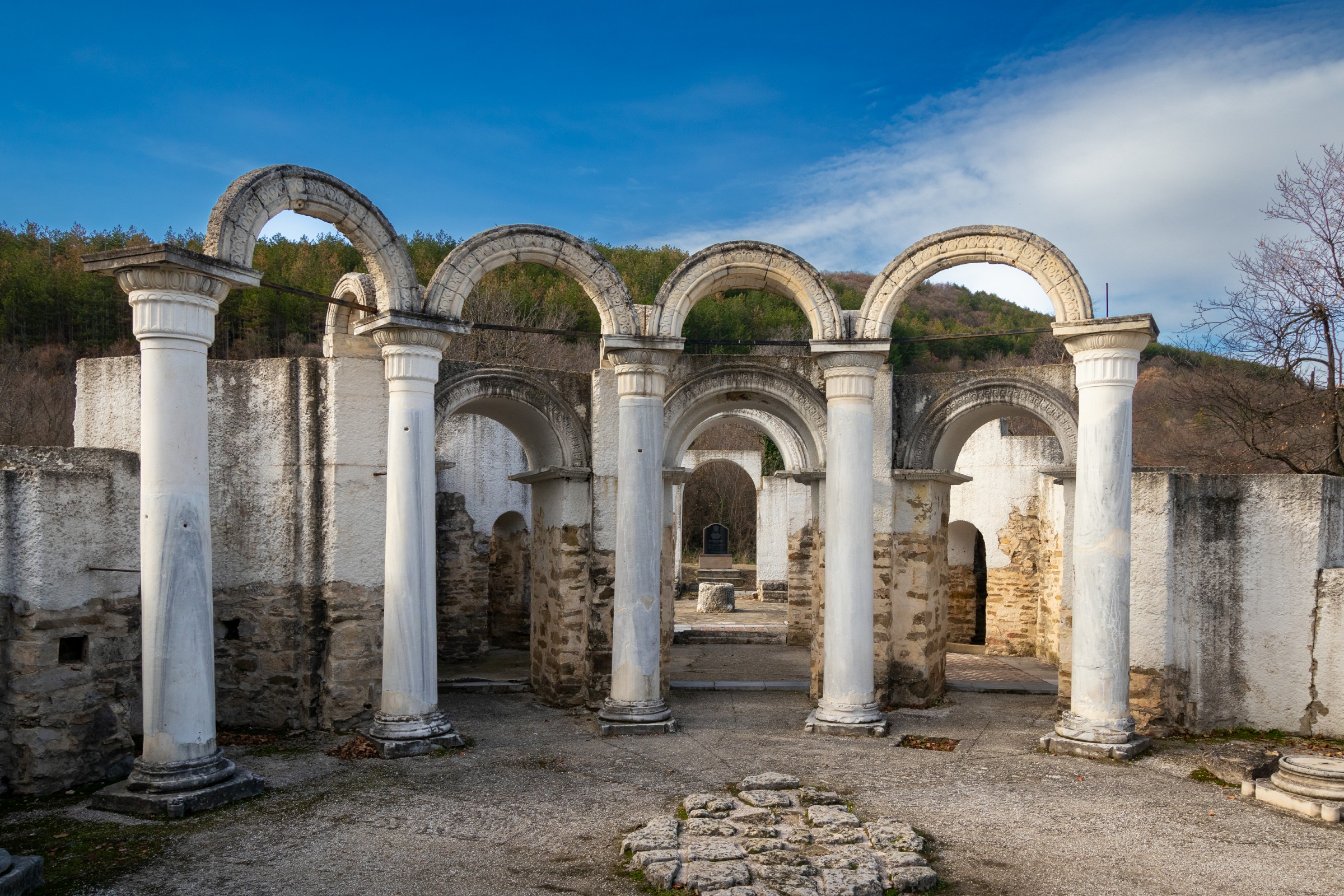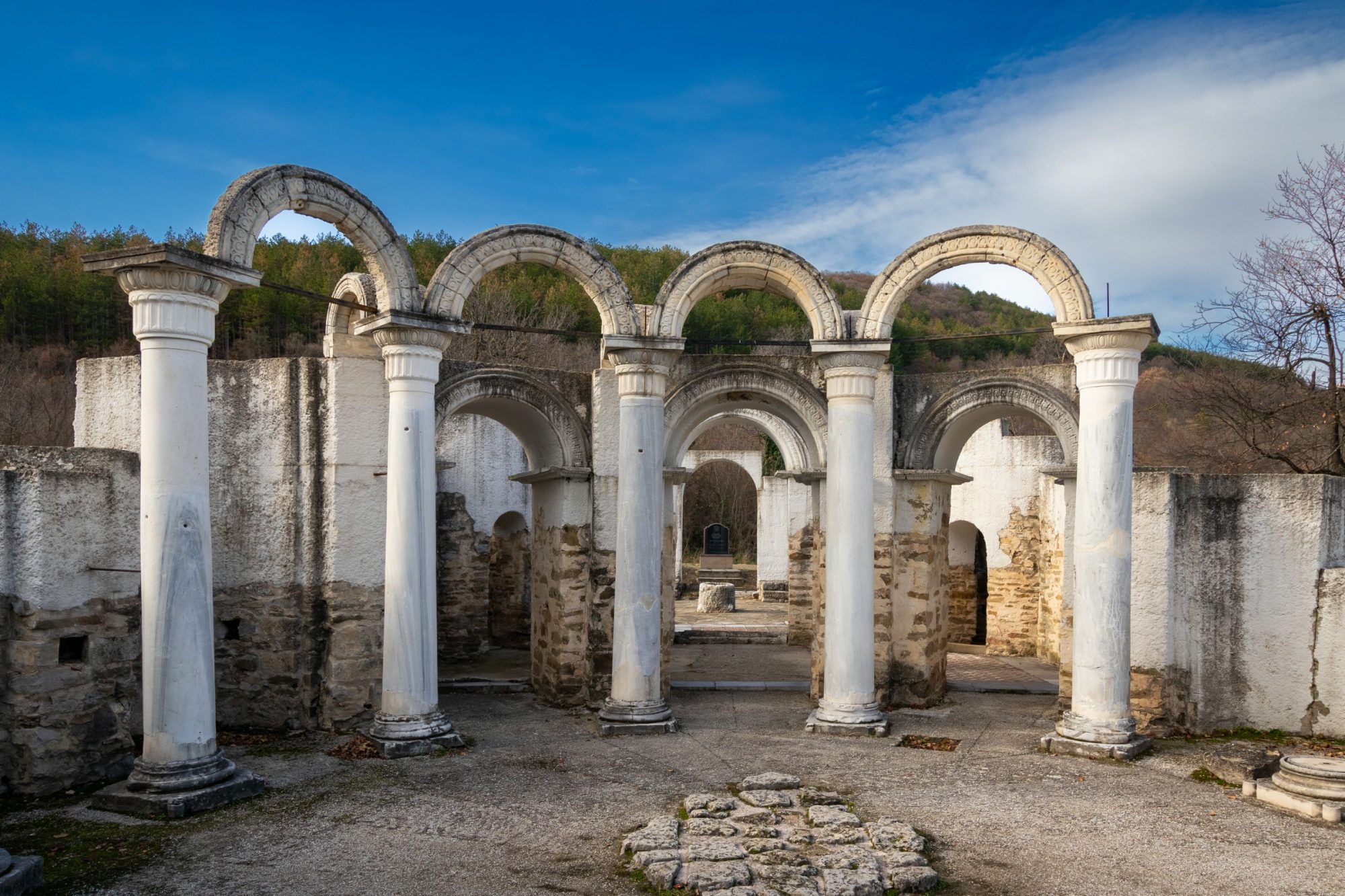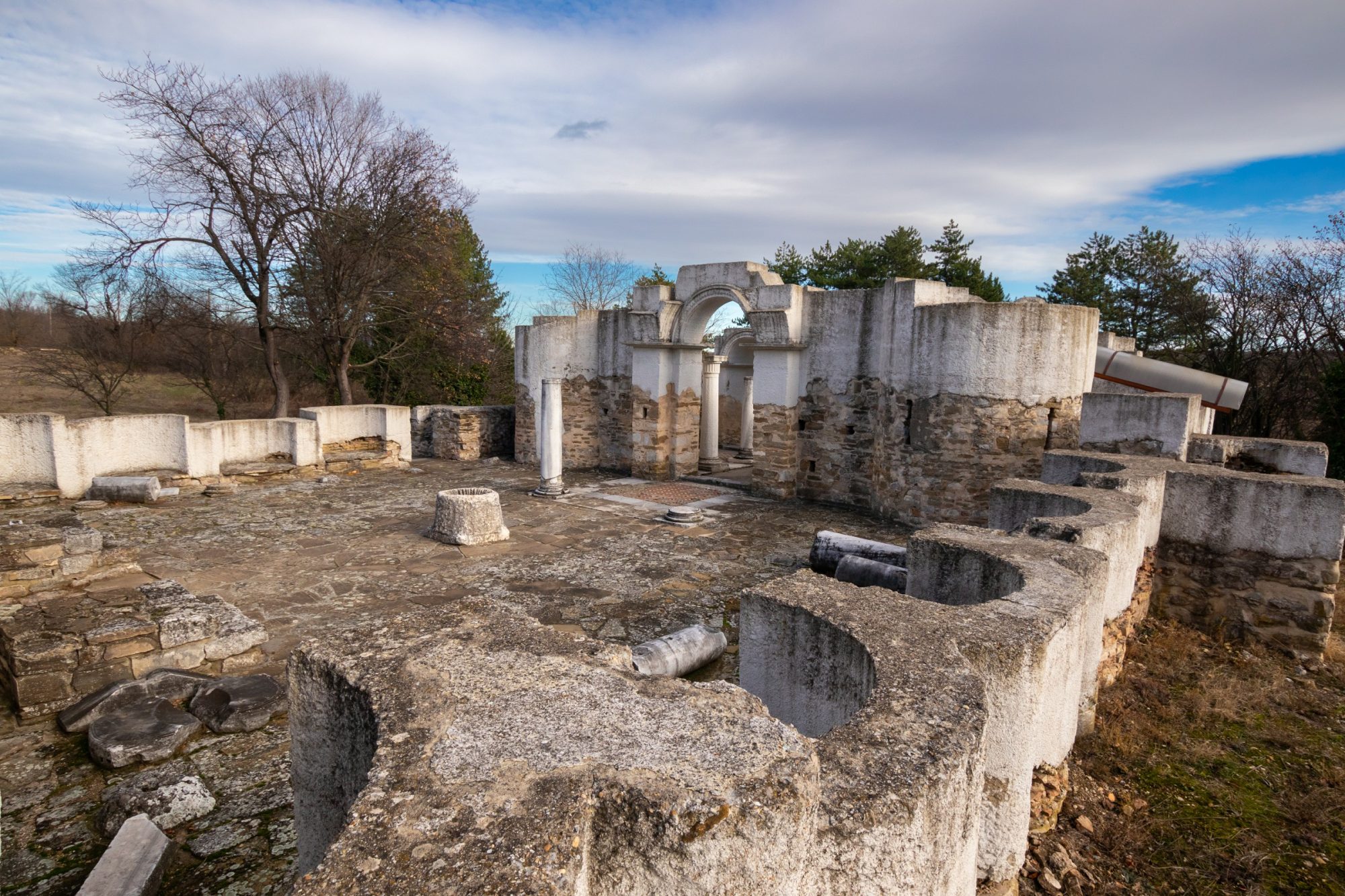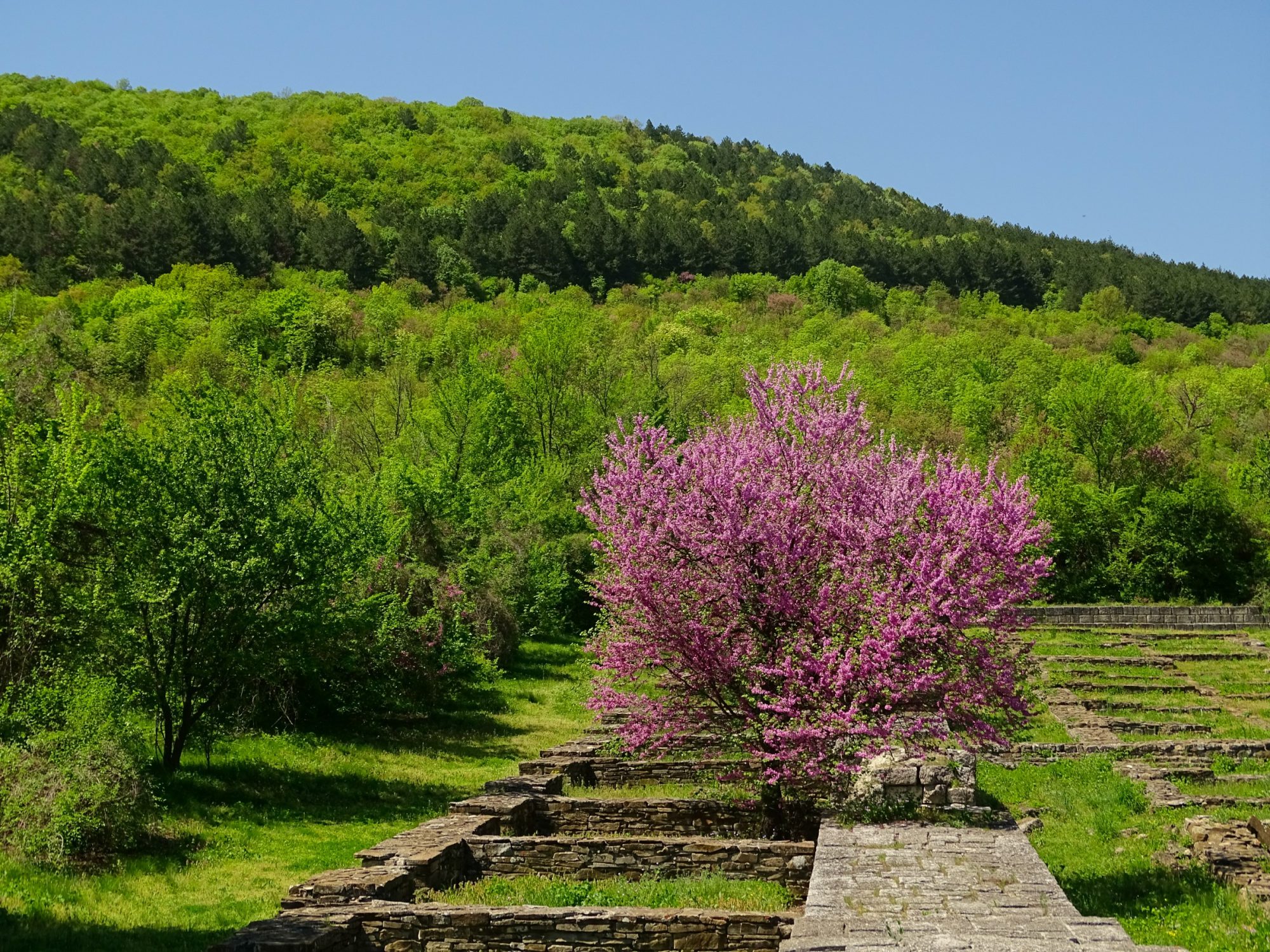




The remains of the second capital of Bulgaria – Veliki Preslav, are preserved and can be viewed at Preslav National Historical and Archaeological Reserve. The old town dates back to the Medieval ages and it is located 22 km from the center of Shumen.
Veliki Preslav witnessed some of the greatest moments in Bulgarian history. During the reign of Tsar Simeon I the Great, the city became the second capital of Bulgaria after Pliska. This happened in 893 and research says that the settlement was designed in such an exquisite way that it could compete even with the majestic Constantinople.
The most representative place in the capital is the palace, built on a high plateau. It consists of two main parts – the Great Palace with the Throne Hall, the Small Residential Palace and the Royal Basilica. The whole place was an architectural masterpiece, full of decorations and stone sculptures – bases, columns, chapiters, etc.
Over the years, the complex has been rebuilt many times. On a high terrace nearby is the so-called Golden Church, built during the reign of Tsar Simeon – an incredible monument of medieval construction.
The royal basilica, known as the Round or Golden Church, is one of the most significant historical discoveries in the area, which we can still see today. It is located directly opposite the royal castle, 30 m from it, and has impressive dimensions for its time – 21.10 m by 47.50 m. This makes it the second largest temple discovered in Bulgaria. It dates back to the 9th century, but it is not specified whether it was built during Simeon’s reign. It is a three-aisled basilica with an entrance from the west, which is also richly decorated.
In addition to the most important buildings, the excavations revealed the foundations of many more buildings, both near and far from the central ones. Several churches were built in different parts of the city, as well as an archbishop’s palace. The farm buildings are an evidence of the strong economy of the state at that time – buildings with fireplaces, commercial premises, storehouses, etc. Visitors can also see the main entrance, remains of several baths and sewer system.
The exhibition of the Veliki Preslav Archaeological Reserve features original works of Old Bulgarian and Middle Byzantine art. The museum houses over 35,000 objects, about 1,700 of which are on display for visitors.
Among the exhibits on display are masterpieces such as the ceramic icon of St. Theodore Stratilates, a replica of Preslav Golden Treasure (the original treasure is in Sofia Archaelogical museum) and the Ceramic Iconostasis from the Palace Monastery, which was included in a number of Bulgarian and international exhibitions. The museum’s exposition includes a replica of Preslav Golden Treasure ( over 170 objects made of gold, silver and bronze), the typical of Veliki Preslav painted white ceramics (facing tiles, household utensils and icons), as well as a collection (among the largest in the world) of Middle Byzantine seals from the period 971 – 1088.
Tickets: see https://en.museum-velikipreslav.com/for-the-museum/prices.html



Useful links
Shoumen Municipality Ministry of Tourism Consumer Protection Commission Regional Historical Museum - Shoumen Vasil Droumev Drama and Puppet Theatre Sinfonietta Shoumen Elena Karamihaylova Art Gallery Anastas Stoyanov Personal Development Support Centre – Municipal Children Complex Stylian Chilingirov Regional Library Arena Shoumen HallTourist Information Center - Shumen Telephone: +359 54 857 773
All rights reserved © 2025г.
Web Design - Dankanic Creative





